Fruitopia (History, Ingredients, Commercials)
While not a candy specifically, Fruitopia occupied the same kind of space as all the sugary treats that you could get at the store, out of vending machines, or at the movie theater. In the mid to late 90s, this was the drink product that every kid wanted to get to enjoy-if their parents would let them, that was! This was a fruity soda product that was heavily marketed at kids, and movie previews and primetime TV alike were convinced that kids were dying to see ads for it.
Snapple was very popular at the same time as this product, and the link between the two is pretty obvious when you think about it. This is a really unique drink product that was popular for a brief time. It occupies a special place in some consumers’ hearts, perhaps in part because it was so short-lived.
Please leave a review or any memories of this snack in the comments at the bottom of this page. Thank you!
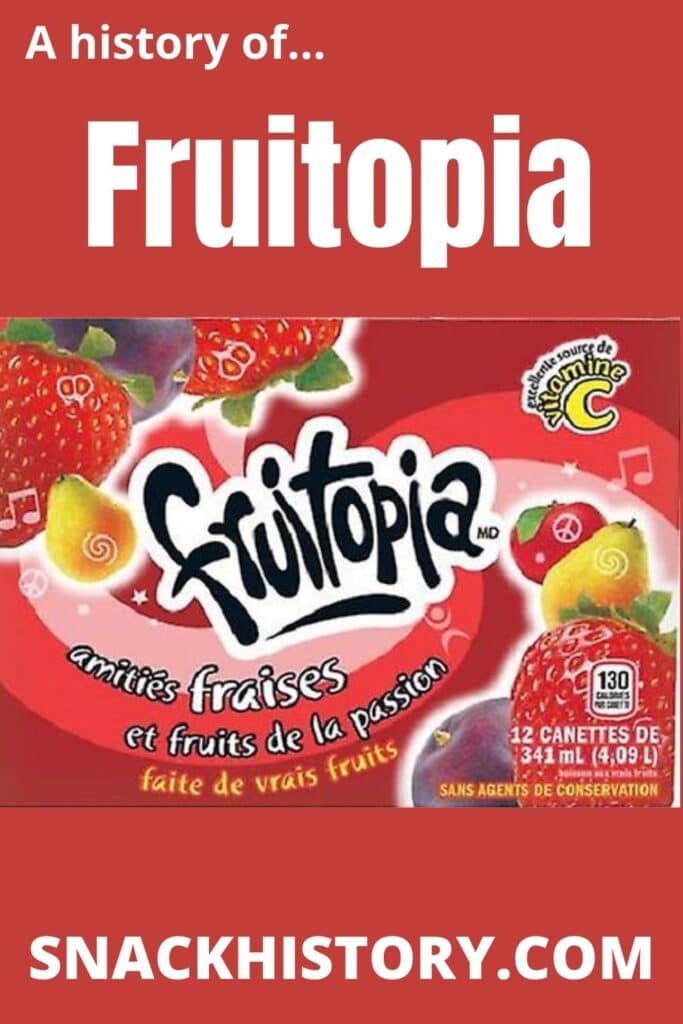
History
Fruitopia was introduced by Coca-Cola in 1994. This product was marketed to teens and toward young adults. This was a marketing ploy used by Coca-Cola to compete with Snapple and some of the other tea drinks that were popular at the time. This was a product that Coca-Cola hyped extensively in order to try and make their own little space within the market for this kind of drink.
Fruitopia is still sold in Australia and Canada but as a juice brand. Fruitopia was pulled off shelves in 2003 in the US. Coca-Cola has used some of the former flavors that were sold in Fruitopia to make Minute Maid brand flavors. Coca-Cola has had more success with Minute Maid than with Fruitopia, so the flavorings that were successful in Fruitopia have been equally popular in Minute Maid products.
Fruitopia was pulled off the market when it had struggled for a few years. There are also some other brands that are using the Fruitopia name under licensing agreements. McDonald’s is one of the locations in the US that does still make products with Fruitopia products, and that still sells Fruitopia itself.
Sergio Zyman was the Coke exec that wanted to make Fruitopia in the first place. He was allowed a $30 million budget to create the product for Coca-Cola, and he used it to his advantage. He made Fruitopia a household name, and Time magazine even ranked it one of the top products of the 1990s.
There were various mentions of Fruitopia in pop culture, like episodes of the Simpsons, and the first product that was marketed extensively was Strawberry Passion Awareness. This first flavor was sold at McDonald’s locations around the US and was also even offered in drink fountains at the time that it was released. There were even Fruitopia-specific vending machines that only sold Fruitopia. These machines were placed on college campuses as well as schools and other locations where young people might be.
There were a lot of other flavors of the drink as well, and all of them were sold in the UK. In the US, not every single flavor was on the market at the same time. There was even a Fruitopia tea line of products that were meant to compete directly with Snapple. These tea products were sold in glass bottles that were 16 ounces in size.
The tea products were made to be targeted at Gen X, but they were not a great fit for that market, as it turned out. The early success of Fruitopia, when marketed toward kids and teens, was lasting. This was not a product that was viewed as an adult-friendly item. The marketing efforts toward those who were older than children were never that successful.
Some adults might have loved Fruitopia as much as their kids, but there were not enough of them to help support an adult product. This was likely a big disappointment to Coca-Cola, but there was likely nothing that could have saved Fruitopia in the long run. The soda market had changed directions by this time, and Fruitopia was a casualty of this change in directions.
There were some issues with the product in Greece that led to a legal battle over the name of the product. There was a conflict with another set of products and comics made in Greece by an artist. This was not decided in favor of Coca-Cola, and the drinks were prohibited for sale in Greek markets. At the end of the 90s, sales in the US were dropping off for all the Fruitopia products. Ironically, the competition with Minute Maid products was part of the downfall of Fruitopia. At the same time, Pepsi replaced their Fruitopia copycat called Fruit Works with their own line of juice products. This line of products was called Tropicana.
Both Minute Maid and Tropicana are still going strong, while the fruity drinks were made first. Fruit juice was clearly more connected with these flavors than soda, and this has continued to be the case in most soda markets. There are a few fruity sodas that are successful these days, but overall, the soda market is not very open to fruit-flavored sodas overall.
Was Fruitopia Healthy?
Fruitopia and products like Snapple were actually sold as health products. This is laughable today with the standards that are used to determine what is healthy or not based on sugar content. These were not products that were made with health in mind, but rather they were made with flavor in mind. The fact that real fruit juice was in most of these products was a small benefit that probably offset some of the sugar content in these drinks.
Sodas were still being sold as healthy diet products at the time as well. The market has not improved significantly since people are still of the mindset that diet sugars are better than regular sugars. There is a lot of evidence to the contrary, but that does not mean that people don’t still tend to gravitate toward fruit juices as healthier than other drink products.
Fruitopia might have been a little healthier than some other soda products on the market, but it was still a brightly-colored soda product with some fruit juice in it. That didn’t stop people from loving the soda when it first hit the market, but the taste for highly sugary foods and drinks did not outlive the 90s in most cases. Many products that were once made with high fructose corn syrup have been changed to be made without this harmful ingredient these days. While the original push to change the recipes of these products was made by the government and other organizations, it did change the way that sodas and other products taste.
Modern consumers are not interested in really sugary products, and they want to at least have some assurance that there are not going to be harmful ingredients in their snacks. This might have been the shift that led to the breakdown of the popularity of Fruitopia, but the soda market was probably shifting to a new agenda at the same time as well. Soda might not have gotten significantly healthier, but the market has shifted significantly over the past twenty years.
Fruitopia was not the worst product for you that was offered in vending machines in the 90s, but all of the various sodas that were sold at this time could have been healthier. Fruitopia might not have been the worst product in the vending machine, but marketing entirely at children probably should have told everyone just how healthy, or not healthy, Fruitopia truly was.
Flavors
- Strawberry Passion Awareness
- The Grape Beyond
- Tangerine Wavelength
- Citrus Consciousness
- Fruit Integration
- Pink Lemonade Euphoria
- Lemonade Love & Hope
- Raspberry Psychic Lemonade
- Strawberry Kiwi Ruckus
- Beachside Blast
- Fruitopia Teas in Beachside Blast, Banana Vanilla inclination, Citrus Consciousness, and Citrus Excursion
Ingredients
The ingredients for this drink that are no longer sold in the US are still available because this drink is sold in various other markets around the world. Not all of the flavors that were made are still sold in other markets.
- Water
- High fructose corn syrup
- Sucrose
- Pear
- Apple
- Strawberry and passionfruit juices from concentrate
- Natural flavors
- Citric acid
- Sodium polyphosphates
- Ascorbic acid
- Sodium benzoate
- Potassium sorbate
- EDTA
- Acacia
- Potassium citrate
Nutrition
| Serving Size: | 250 ml | % Daily Value* |
| Amount Per Serving | ||
| Calories from Fat | 0 | |
| Total Fat | 0g | 0% |
| Sodium | 20mg | 1% |
| Total Carbohydrates | 25g | 8% |
| Sugars | 24g | |
| Protein | 0.1g | |
| 100%Vitamin C | 100% |
- Percent Daily Values are based on a 2000 calorie diet.
Logo
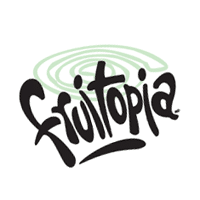
Pictures
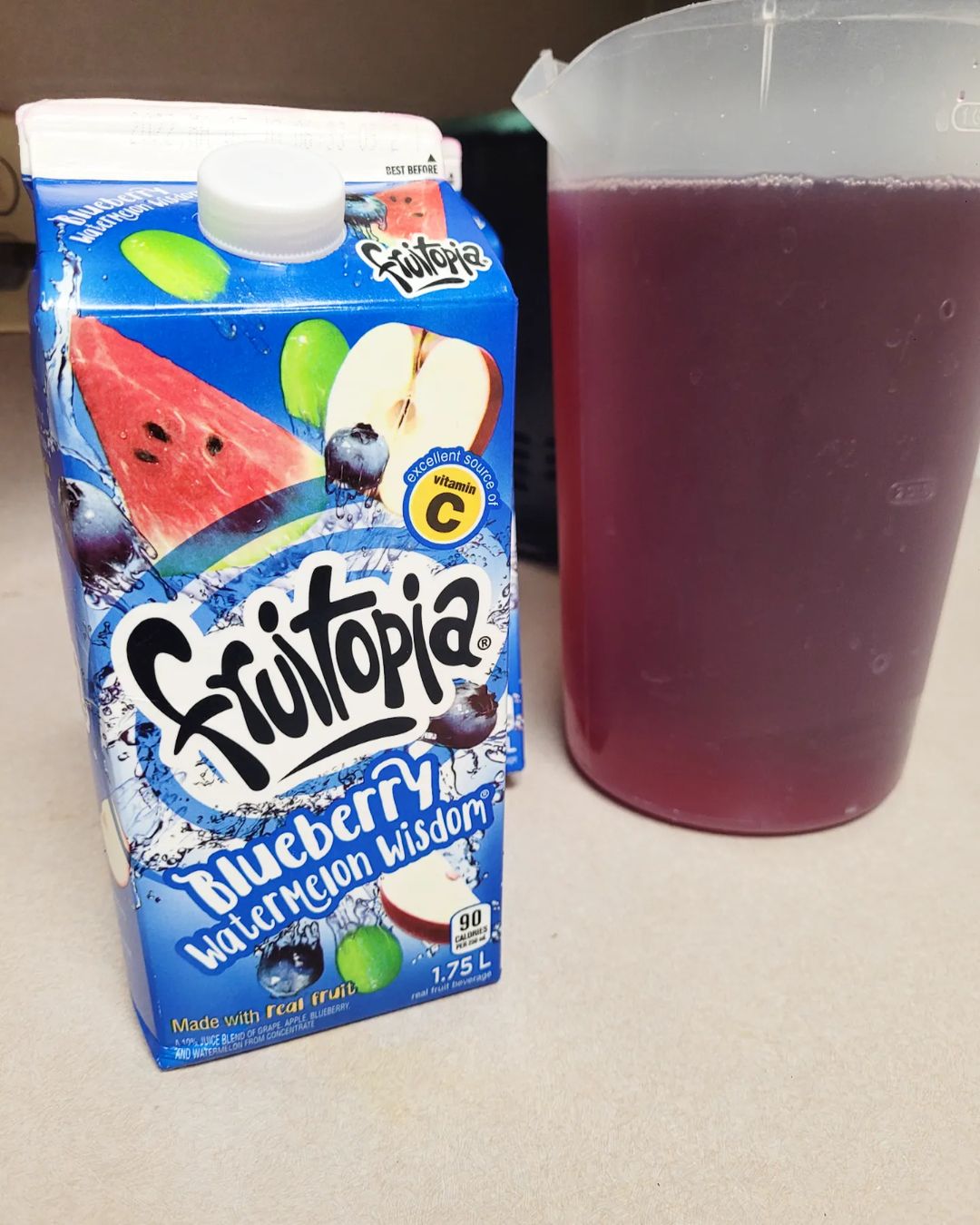
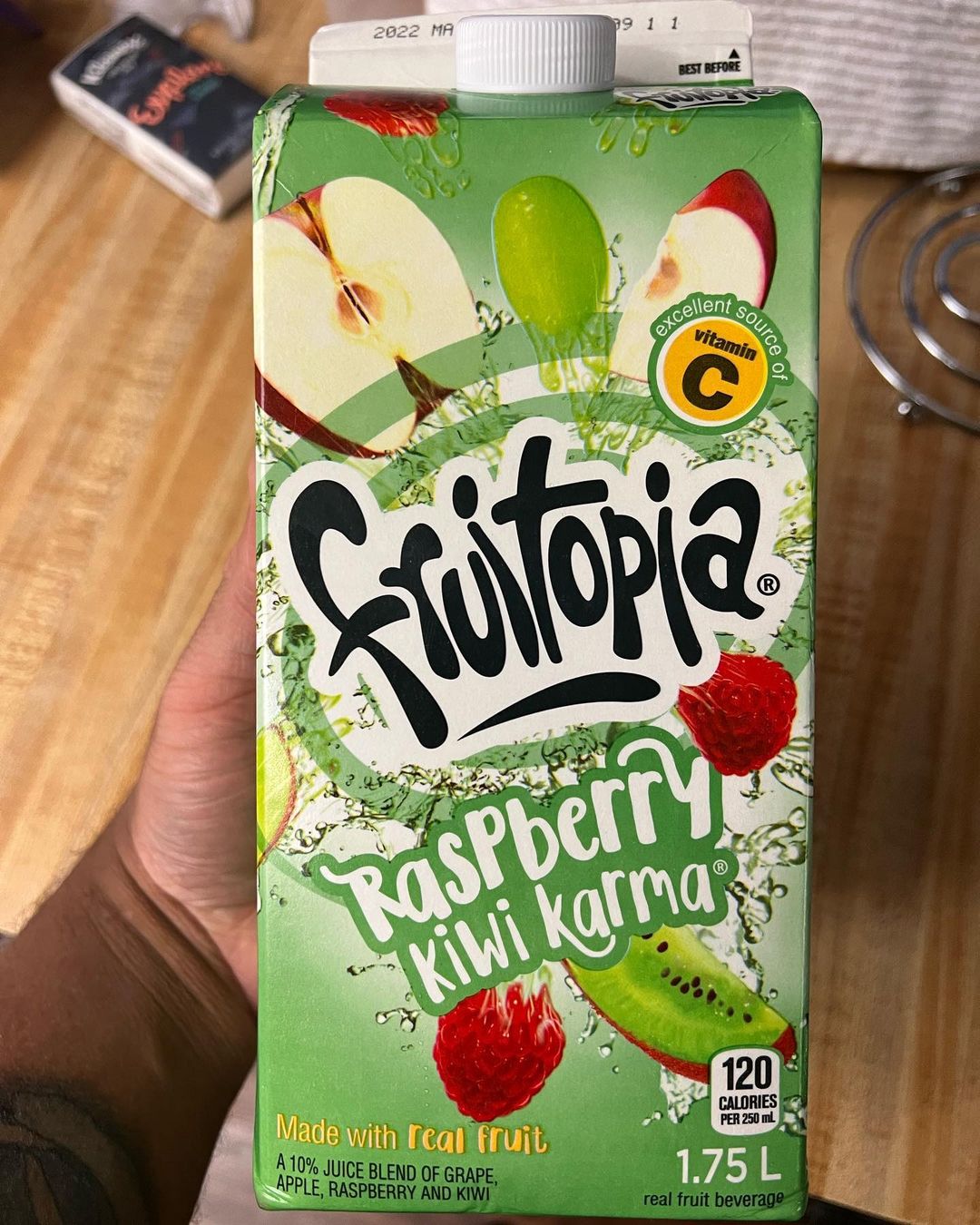
Advertising Style
This product was advertised in a really specific way. This was a colorful, chaotic, and busy advertising model that included pop singers, dancers, loud music, and more. This was a marketing plan that was intended to rope in the young people that the product was made for. The makers of the ads said that they were actually modeled after hippie ads and styling of the 60s.
The background music that was used for many of the ads included underground music of the time but also pieces from Bush and the Cocteau Twins. Fruitopia was frequently advertised with the slogan, “Fruitopia: for the mind, body, and planet”.
Ad from the mid-90s:
Another ad from the mid ’90s:
Form the same era:
An Australian ad:
Fruitopia tea commercial:

My name is Brianna and I love writing on all topics. Candy history fascinates me and I am passionate about sharing my love of this topic with everyone else!
Please leave a review or any memories of this snack in the comments below. Thank you!
Click here for a full A-Z list of Snacks and Candy
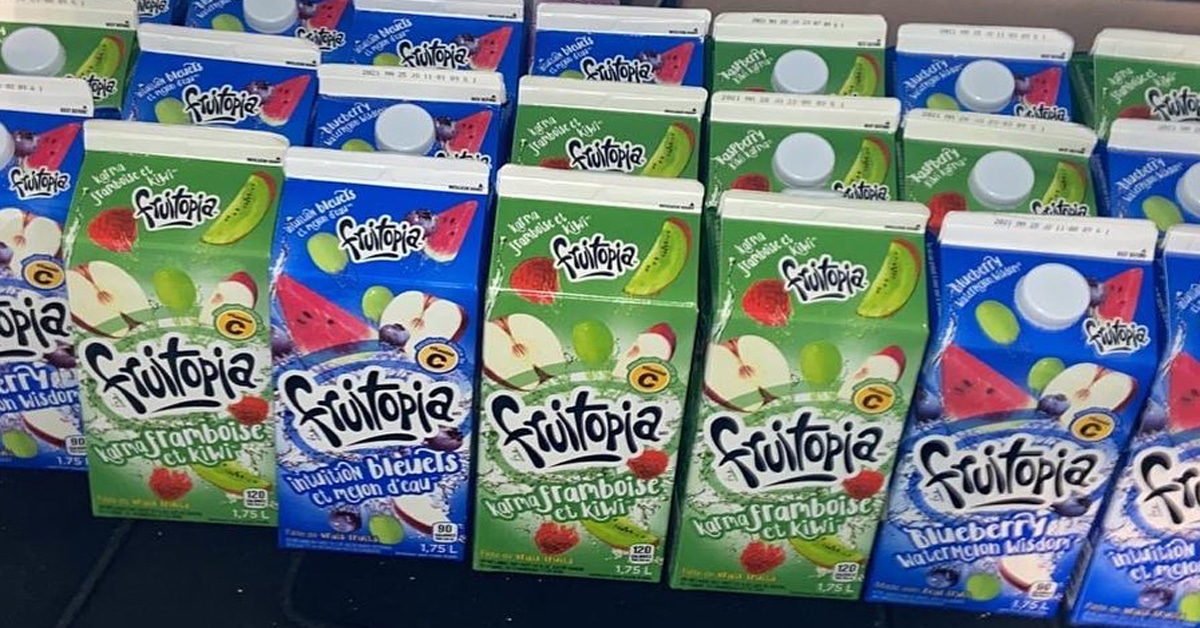
The product is like drinking candy you smell how sweet it is.